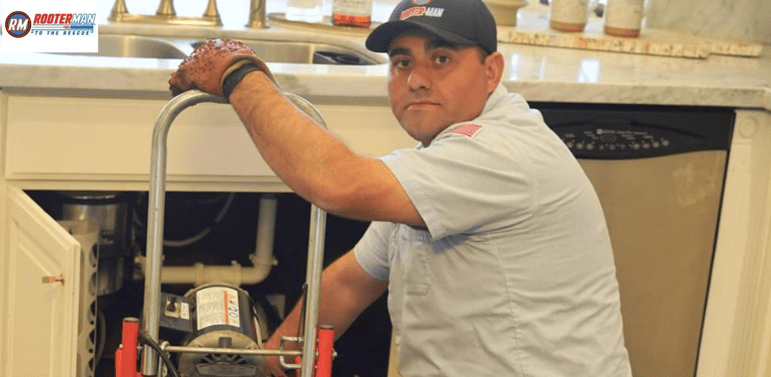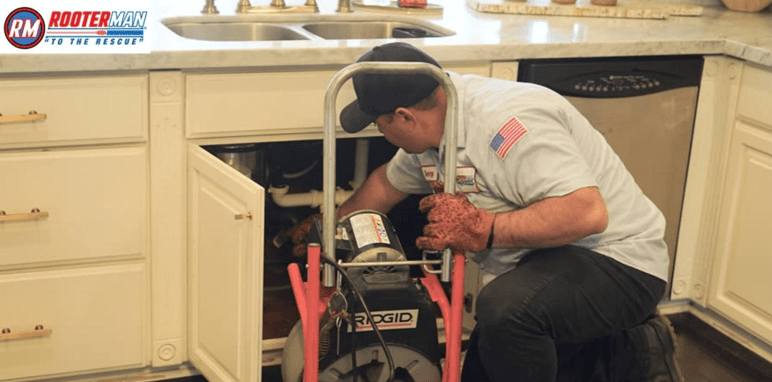Outdoor drains are integral to keeping our homes and gardens dry, channeling excess water away from places that might cause damage or unsafe conditions. There are various outdoor drains, each serving its specific function. Knowing these differences will allow you to select one appropriate to your needs. Knowing when to call a professional plumber in Fountain Valley can also make all the difference in maintaining drainage systems efficiently. Rooter Man Plumbing of Orange County examines five main categories of outdoor drains.
1. French Drains
French drains are among the most prevalent outdoor drainage solutions, consisting of an enclosed trench filled with gravel or rock and connected by a perforated pipe that redirects surface and groundwater away from an area. French drains can prevent surface and groundwater accumulation near foundations, which could eventually cause structural issues; they also help ensure your yard doesn’t turn into a swamp after heavy rainstorms have subsided – should water pool in your yard persistently, it may be time for professional plumbers in Fountain Valley to install French drains instead. If pooling occurs, then consult professional plumbers immediately about installation options.
2. Catch Basins
Catch basins are another standard outdoor drain option, installed as significant, box-shaped drains into the ground to collect surface water from lawns, driveways, or streets and release it through an inverted funnel with an adjustable grate at its top into pipes leading away from your property. Catch basins play an essential role in protecting areas prone to heavy rainfall from flooding and erosion as they keep debris out of drain pipes, thereby maintaining optimal system operation – regular catch basin maintenance from an experienced plumber in Fountain Valley can prevent blockages as well as ensure efficient system operation of drainage system!
3. Channel Drains
Often called trench drains, channel drains (also referred to as trench drainage systems or ditches) are long and narrow drains installed alongside driveways, patios, or pool decks to collect surface water and carry it away without creating pooled spots where pooling could damage or create slippery conditions. Channel drains work particularly well in challenging surface environments as they quickly process large volumes of liquid. A professional plumber in Fountain Valley may assist you with selecting and installing appropriate channel drains in large areas that collect liquid.
4. Downspout Drains
Downspout drains connect directly with your gutter system, diverting water from the foundation. They typically extend underground until reaching an appropriate discharge point, such as a storm sewer or dry well, for disposal of rainwater runoff from roof runoff, helping prevent basement flooding, soil erosion, and foundation damages by managing runoff more effectively. Inspecting and cleaning downspout drains regularly will prevent clogs while guaranteeing their correct functioning; should problems arise with these systems, consulting with an experienced Fountain Valley plumber can quickly fix these issues to safeguard against potential water damage issues before taking steps yourself against water damage by keeping up-to-date on maintenance requirements of this vital water management feature of home!
5. Dry Wells
Dry wells are underground structures designed to collect and disperse stormwater runoff. Filled with gravel or other porous materials that allow rainwater to seep into the ground slowly, dry wells provide an effective solution for properties with poor drainage or areas subject to heavy rainfall, helping reduce flood risks by infiltrating naturally into soil layers without flood or erosion risks. However, installing such an intricate feature requires thorough planning and excavation – hiring professional plumbing services such as Fountain Valley plumbers is recommended so your dry well works efficiently over time!
Why Outdoor Drains Are Important
Outdoor drains protect your property against water damage, helping manage and direct its flow while keeping excess liquid away from pooling in areas it shouldn’t. Different types of outdoor drainage systems play a crucial role in this process. Without adequate drainage systems in place, this excess moisture could create numerous issues on the property. – including problems like:
Foundation Damage: Water that pools around your home can seep into its foundation, leading to cracks or structural instability, which can weaken it over time.
Soil Erosion: Too much rainwater may wash away soil from surrounding areas, causing erosion and landscape degradation.
Flooded Basement: Poor drainage can result in too much water entering your basement, leading to mold growth and property damage.
Slip Hazards: Standing water on driveways, patios, or walkways creates slippery surfaces, which increase the risk of accidents and should, therefore, be monitored closely to mitigate accidents.
Rooter Man Plumbing of Orange County
Once you understand the various outdoor drain types and their purpose, proactively safeguarding your property becomes much more straightforward. Regular maintenance by professional plumbers in Fountain Valley will ensure your drainage system continues working efficiently. Whether that means installing new French drains or cleaning out catch basins regularly, professional assistance from Rooter Man Plumbing of Orange County makes all the difference in keeping outdoor environments safe and dry.

